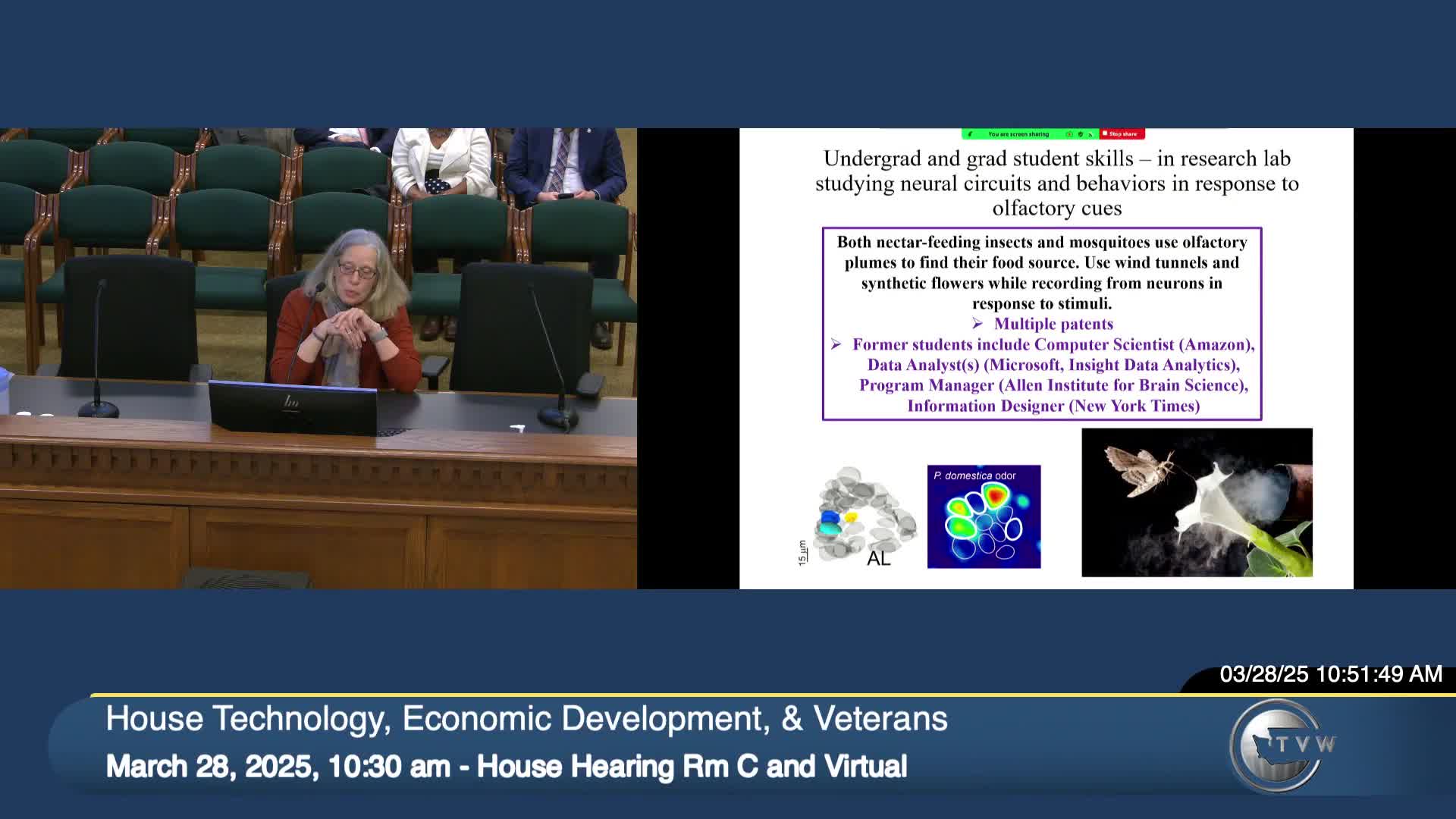Washington University highlights female students excelling in biology and health sciences
March 28, 2025 | Innovation, Community & Economic Development, & Veterans, House of Representatives, Legislative Sessions, Washington
This article was created by AI summarizing key points discussed. AI makes mistakes, so for full details and context, please refer to the video of the full meeting. Please report any errors so we can fix them. Report an error »

In a recent meeting of the Washington Legislature's House Technology, Economic Development, and Veterans Committee, a vibrant discussion unfolded around the promising future of students in the sciences, particularly in biology and health care. As the meeting progressed, the spotlight shone on the remarkable achievements of undergraduates who are not only excelling academically but also making significant strides in their professional careers.
One speaker highlighted the impressive trajectories of former students, now thriving as computer scientists at Amazon, data analysts at Microsoft, and even information designers for the New York Times. These success stories serve as a testament to the robust educational foundation provided by Washington's institutions, where students engage in hands-on research and technology from early on in their academic journeys.
The speaker emphasized the importance of experiential learning, noting that about a quarter of students participate in research labs, gaining invaluable skills in scientific data analysis and communication. This practical exposure equips them to contribute meaningfully to the technological landscape and the economy at large. The pride in these students was palpable, as they not only learn but also teach, serving as peer facilitators and sharing their knowledge with others.
As the conversation shifted, questions arose regarding gender representation within the sciences. The speaker reported a notable gender balance, with 60% of students in introductory biology classes being female. This trend continues into advanced studies, particularly in health sciences, where women are well-represented and excelling in quantitative fields. The discussion underscored a shift in perceptions, revealing that women are not only participating but are also leading in areas traditionally dominated by men, such as network analysis and modeling.
The meeting concluded with a sense of optimism about the future of science education in Washington. As the state continues to nurture its talented students, the potential for innovation and economic growth remains bright. The commitment to fostering a diverse and skilled workforce is clear, and the implications for health care and technology sectors are profound. As these students prepare to enter the workforce, they carry with them the promise of progress and the drive to make a difference in their communities and beyond.
One speaker highlighted the impressive trajectories of former students, now thriving as computer scientists at Amazon, data analysts at Microsoft, and even information designers for the New York Times. These success stories serve as a testament to the robust educational foundation provided by Washington's institutions, where students engage in hands-on research and technology from early on in their academic journeys.
The speaker emphasized the importance of experiential learning, noting that about a quarter of students participate in research labs, gaining invaluable skills in scientific data analysis and communication. This practical exposure equips them to contribute meaningfully to the technological landscape and the economy at large. The pride in these students was palpable, as they not only learn but also teach, serving as peer facilitators and sharing their knowledge with others.
As the conversation shifted, questions arose regarding gender representation within the sciences. The speaker reported a notable gender balance, with 60% of students in introductory biology classes being female. This trend continues into advanced studies, particularly in health sciences, where women are well-represented and excelling in quantitative fields. The discussion underscored a shift in perceptions, revealing that women are not only participating but are also leading in areas traditionally dominated by men, such as network analysis and modeling.
The meeting concluded with a sense of optimism about the future of science education in Washington. As the state continues to nurture its talented students, the potential for innovation and economic growth remains bright. The commitment to fostering a diverse and skilled workforce is clear, and the implications for health care and technology sectors are profound. As these students prepare to enter the workforce, they carry with them the promise of progress and the drive to make a difference in their communities and beyond.
View full meeting
This article is based on a recent meeting—watch the full video and explore the complete transcript for deeper insights into the discussion.
View full meeting
